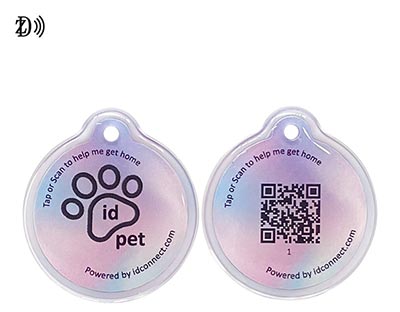An NFC (Near Field Communication) tag is a small, passive device that can store and transmit data when in close proximity (typically within a few centimeters) to an NFC-enabled device, such as a smartphone. Here’s a detailed breakdown of its functions and uses:
How NFC Tags Work:
Passive Communication: NFC tags do not have their own power source. They rely on the electromagnetic field generated by an active NFC device to power them and exchange data.
Data Storage: These tags can store small amounts of data, typically ranging from a few bytes to a few kilobytes. This data can include URLs, contact information, text, or other predefined actions.
Data Transmission: When an NFC-enabled device comes within range, it can read or write data to the NFC tag through electromagnetic induction.
Uses of NFC Tags:
Contactless Payments: NFC tags are widely used in credit/debit cards and smartphones to facilitate secure, contactless payments.
Smart Posters: NFC tags embedded in posters can provide additional information or actions when scanned, such as opening a web page, playing a video, or downloading an app.
Access Control: Used in keycards for buildings, hotels, or public transport to grant or restrict access.
Smart Products: NFC tags can be embedded in products to provide consumers with information, verify authenticity, or engage in promotions.
Automation: Users can program NFC tags to automate tasks on their smartphones, such as turning on Wi-Fi, sending a text message, or setting an alarm.
Data Sharing: Quickly share contacts, Wi-Fi credentials, or files between devices.

Advantages:
Convenience: Easy and quick to use without the need for pairing or complex setup.
Security: Limited range makes eavesdropping or unauthorized access more difficult.
Versatility: Can be used for a wide range of applications, from payments to information sharing and automation.
Limitations:
Range: Very short range, typically up to 10 centimeters.
Data Capacity: Limited storage capacity, which restricts the amount of data that can be stored.
Dependency on NFC-enabled Devices: Both the tag and the interacting device must support NFC.
In summary, NFC tags are versatile tools for wireless, short-range data exchange, with applications spanning from payments and access control to smart automation and interactive marketing.





